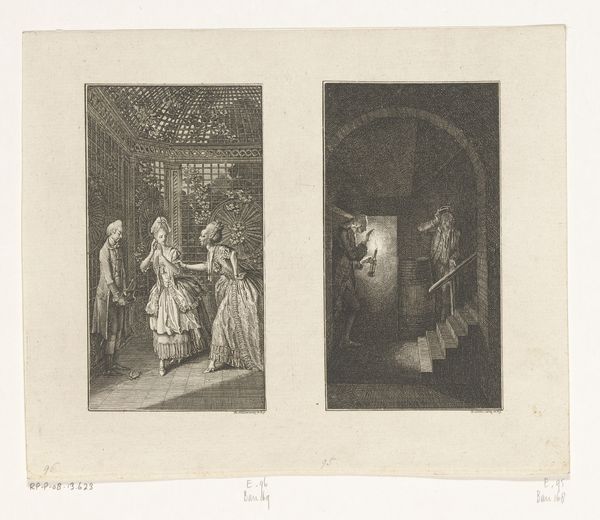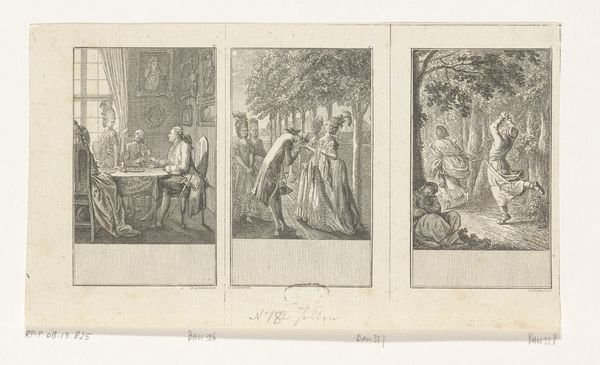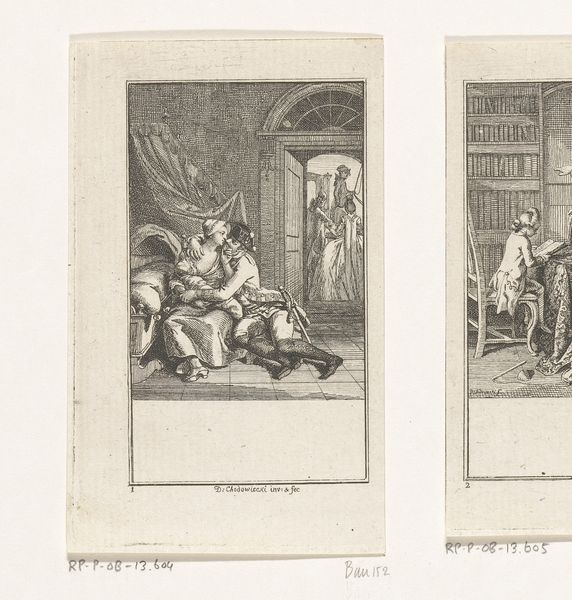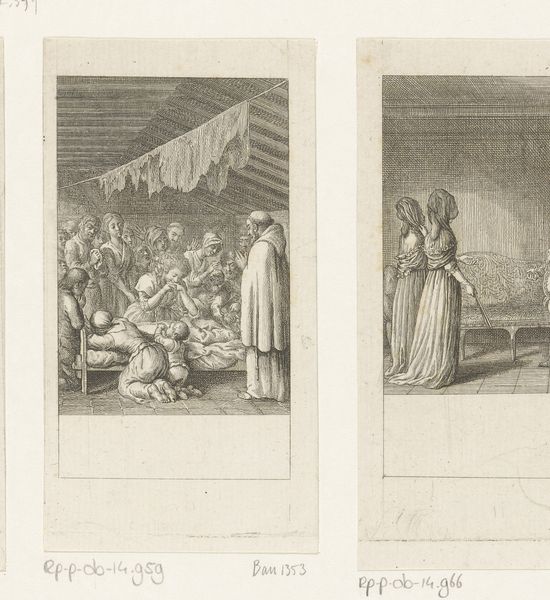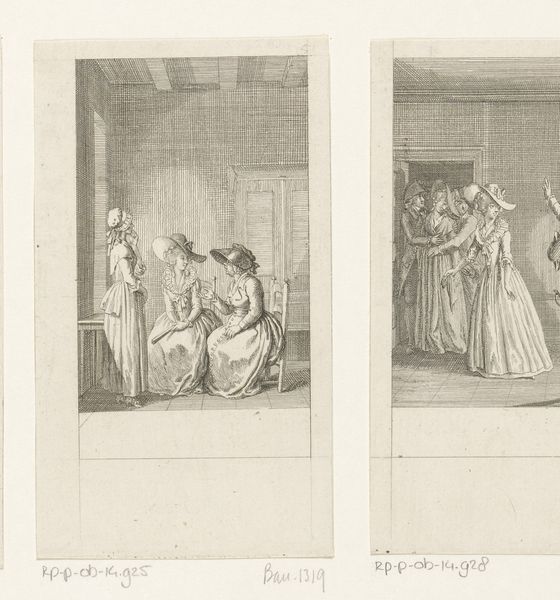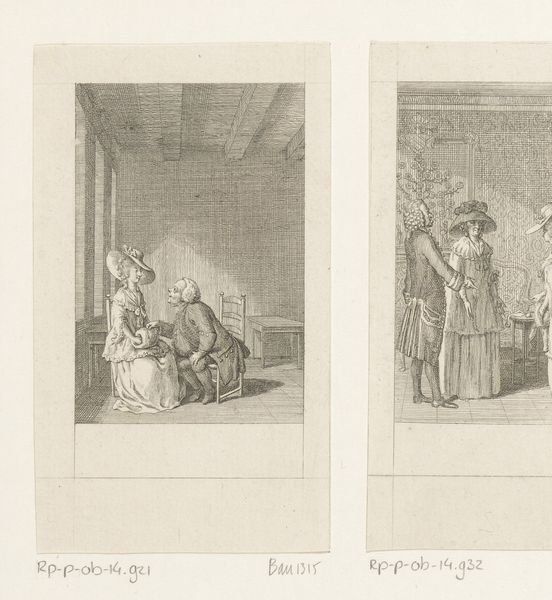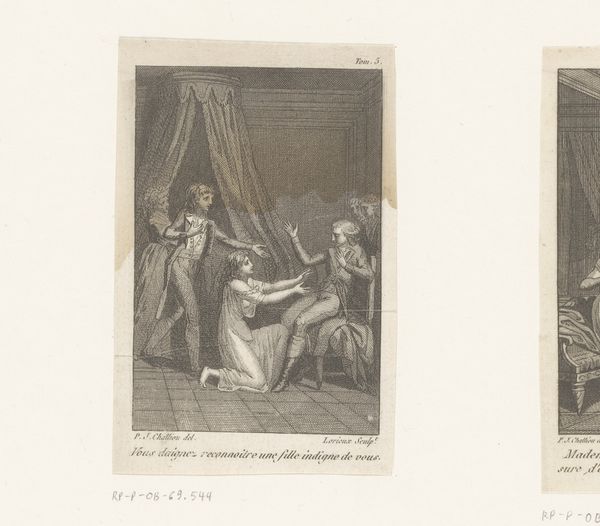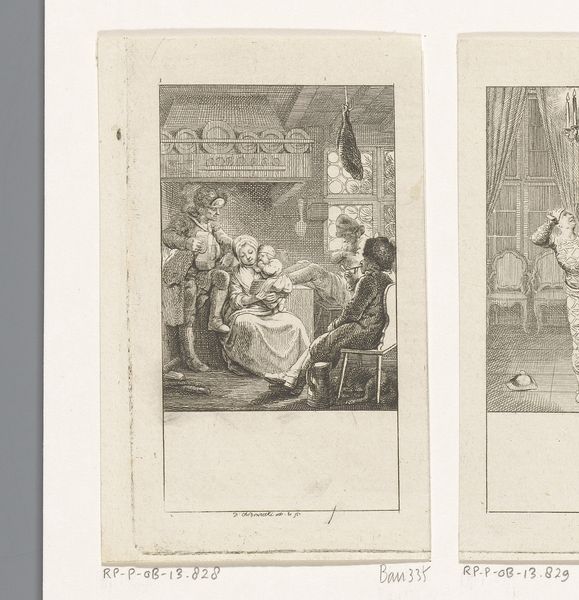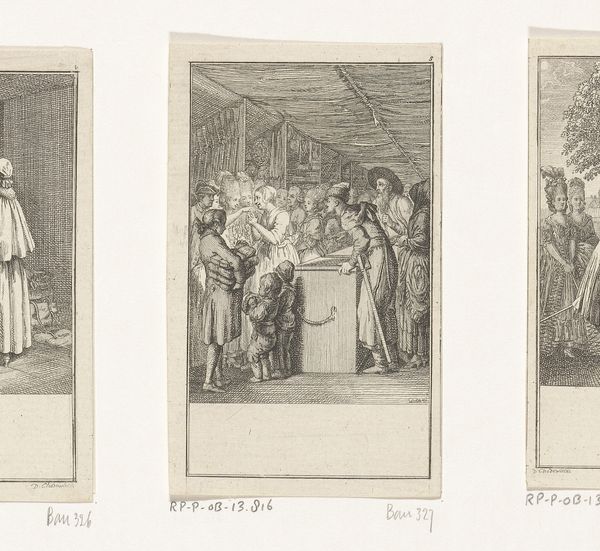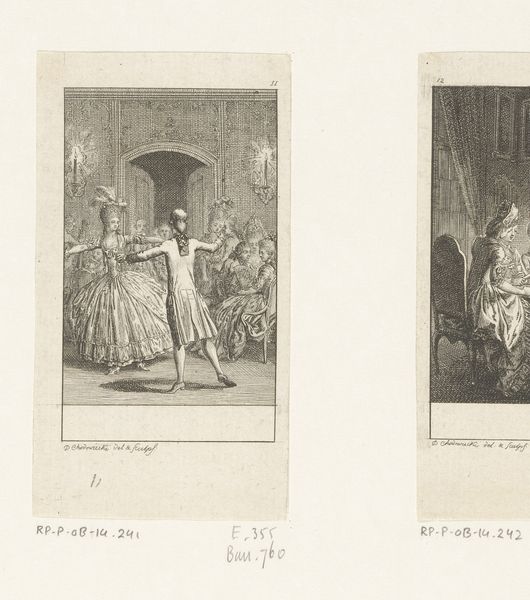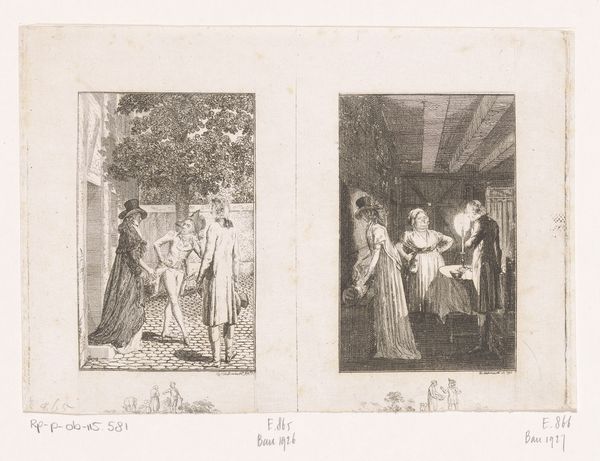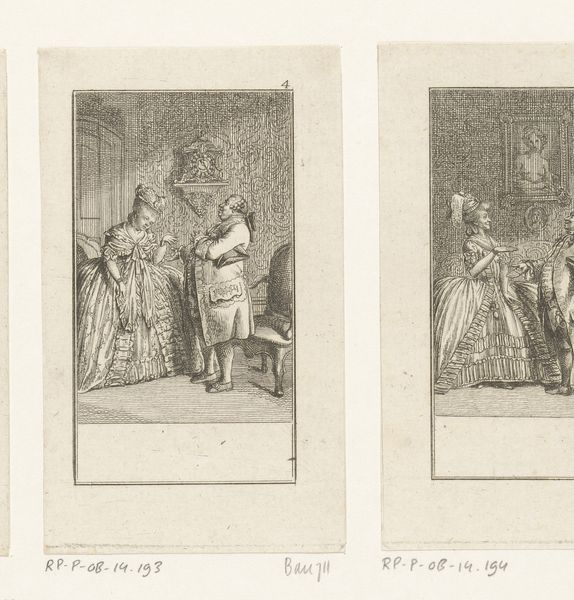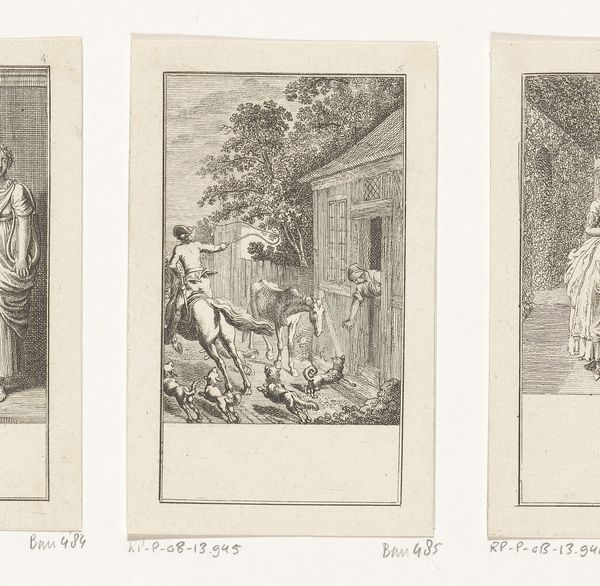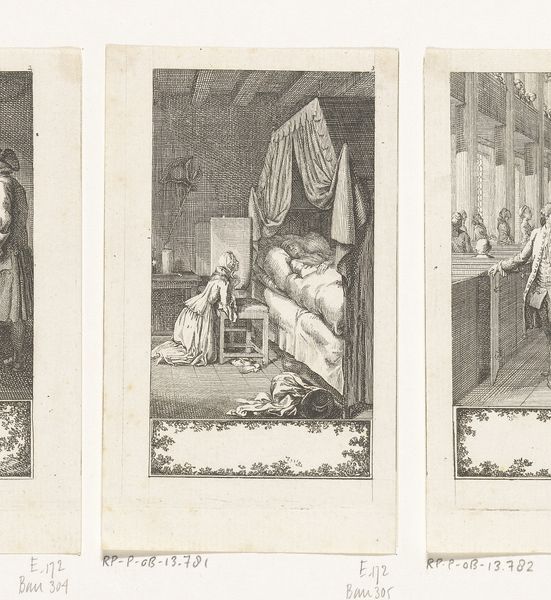
Dimensions: height 101 mm, width 61 mm
Copyright: Rijks Museum: Open Domain
Editor: So, this is "Interieur met vrolijk gezelschap" from 1778 by Daniel Nikolaus Chodowiecki. It’s an etching, which gives it this incredible detailed, almost miniaturist feel. It looks like two contrasting scenes; the one of the left has more activity, more people, and then one on the right appears very poor, someone caring for the sick or sleeping person. How should we interpret these etchings, their style and content? Curator: As a materialist, I see two distinct economies presented in this print. We must examine the material realities and labor reflected in each scene. On the left, the elite's opulent interior – lit by that extravagant chandelier – showcases consumption and leisure, fuelled by resources extracted and labor exploited. Notice the figures engaged in what appears to be financial exchange. What is being exchanged, and by whom? Editor: Good point, it’s unclear what they are bargaining for, but there is someone inspecting a coin at the table. And you’re right about the stark contrast to the scene on the right! Curator: Exactly. The other scene depicts a contrasting domesticity; the very line work seems worn and stressed; this conveys a different set of resources, materials, and means of production of life itself, seemingly untouched by money. The presence of an invalid hints at illness and poverty which may require laboring. What is the relationship between these scenes, given they exist on the same sheet? Editor: That's what's so striking – their co-existence. Are you suggesting the "vrolijk gezelschap", or happy gathering, directly benefits from the conditions of the scene on the right? A link between luxury and labor? Curator: Precisely! By analyzing the print’s material production – the etching process, its availability, and the contrasting scenes depicted – we can understand this artwork not just as a narrative, but as a commentary on 18th-century economic and social structures and a call for social reform. The contrast allows for considering the relations between those pictured. Editor: It’s amazing to consider the etching itself as a material object reflecting these power dynamics. It makes the image way more complex than it initially seems!
Comments
No comments
Be the first to comment and join the conversation on the ultimate creative platform.
